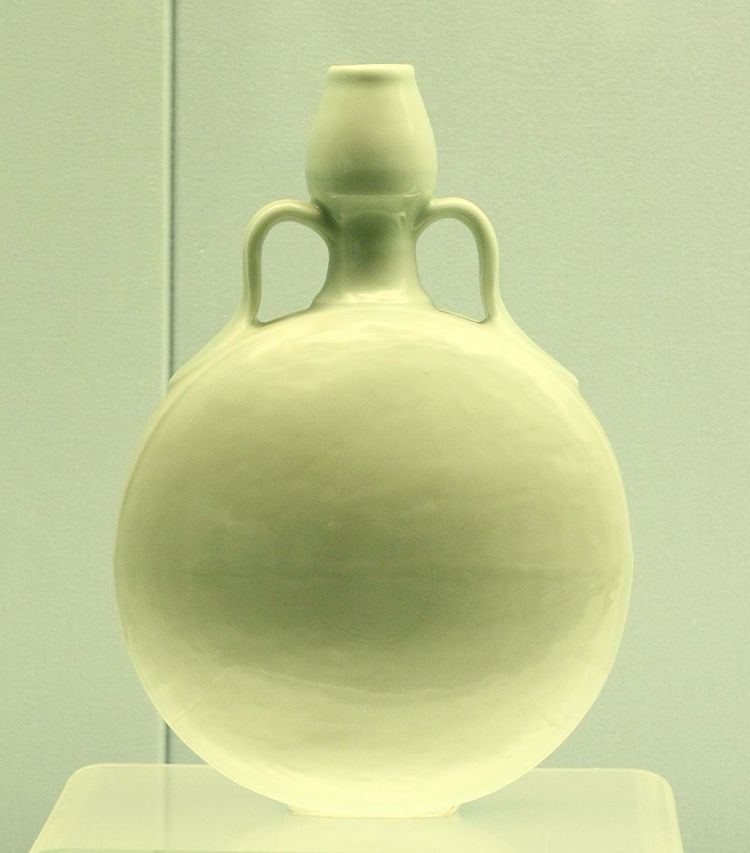 | ||
An hua (Chinese: 暗花; pinyin: ànhuā) is a term used in Chinese ceramics, especially Chinese export porcelain meaning secret or veiled decoration; the designs being visible through transmitted light, produced either by incising the design into the porcelain before glazing and firing or by delicate slip-trailing in white slip on the porcelain body.
Incised, carved or mould-impressed monochrome decoration under a ceramic glaze was the dominant type of decoration during the Song dynasty, in types of white wares such as Ding ware and Qingbai. But the term is mainly used of the still more discreet version of the technique popularized under the Yongle Emperor (1360-1424) of the Ming dynasty (1368-1644), and continued later, particularly during the reign of the Yongzheng Emperor (1723-1735) in the Qing dynasty. Very often dragons were concealed in the interior of bowls.
Some an hua dishes were found inside a storage jar in the mid-15th century (1450-1487?) Belankan shipwreck off the coast of Indonesia, found circa 1999.
